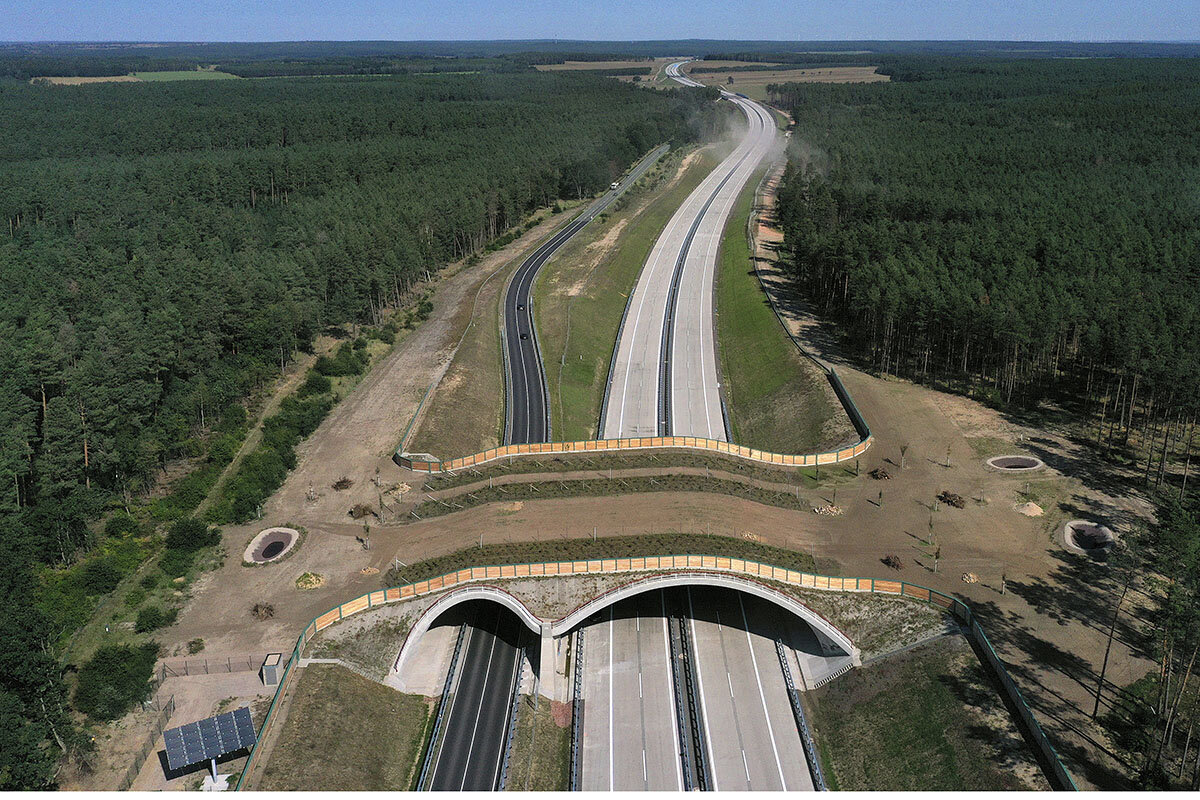How construction is reuniting wildlife one highway at a time

 Eva Botkin-Kowacki
Eva Botkin-Kowacki
Why did the moose cross the road? Because it was finally safe to get to the other side.
Last month, a video posted to Facebook by the Utah Division of Wildlife Resources depicting just that caught the attention of hundreds of thousands of viewers. The compilation of clips showed moose, deer, coyotes, foxes, bears, squirrels, and even porcupines ambling on a bridge crossing over the six-lane Interstate 80 in Park City, Utah.
That bridge is part of a growing number of overpasses and underpasses around the world built expressly for wildlife to be able to cross roads safely. There are bridges, like the one in Utah, tunnels for turtles, underpasses to reunite elephant herds, and now, in India, a bamboo, jute, and grass suspension bridge designed for reptiles.
Such wildlife crossings don’t just benefit the animals. People can also be injured – or killed – by car crashes involving wildlife. But when safe passage is constructed for the animals, such accidents are reduced by 85% to 95%, according to a National Geographic report last year.
As more of these wildlife crossings are built around the globe, they also mark a shift in how humans relate to wild spaces. Rather than further dividing animals’ habitats, this construction honors the interconnectedness of the natural world.
As Stuart Pimm, chair of conservation at Duke University, told National Geographic in 2018 about a wildlife corridor in Brazil, “It’s healing a tear in the forest.”



